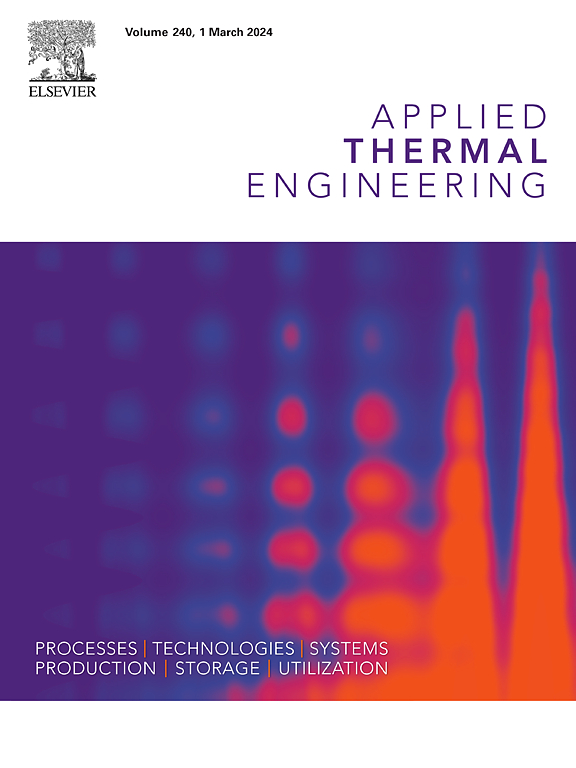Experimental study on surface temperature and emissivity of rotating turbine blades of a micro turbojet engine
IF 6.1
2区 工程技术
Q2 ENERGY & FUELS
引用次数: 0
Abstract
The temperature of the rotating turbine blades of a turbojet engine must be known to assess the combustion state and improve turbine blade quality. Obtaining online temperature measurements of high-speed rotating turbine blades in high-temperature gas flow remains challenging. A multispectral radiation thermometry method without emissivity assumption is proposed to measure the temperature of high-speed rotating turbine blades of a micro turbojet engine. The relative radiative intensity is calculated by accounting for smooth changes in the wavelength using the moving narrowband method to determine the influence of emissivity on multispectral radiation thermometry results. The method’s performance in measuring the surface temperature of high-speed rotating objects is tested. The wavelength range of 970 nm to 1700 nm is selected because the radiation from gases is weaker in comparison to the radiation emitted by solid surfaces within this band. The spectral radiation of the turbine blade surface is measured at three rotational speeds: 38,000 r/min, 48,000 r/min, and 58,000 r/min. The results show that, unlike thermocouples that measure the temperature of the hot gas flow near the blade, multispectral radiation thermometry provides the average surface temperature with high consistency (with a deviation smaller than 50 K). Multispectral radiation thermometry can be applied to measure the surface temperature and emissivity of high-speed rotating objects, such as the blades of turbojet engines.
微型涡轮喷气发动机旋转涡轮叶片表面温度和发射率的实验研究
必须了解涡轮喷气发动机旋转涡轮叶片的温度,以评估燃烧状态并提高涡轮叶片的质量。在高温气流中获得高速旋转涡轮叶片的在线温度测量仍然具有挑战性。本文提出了一种无发射率假设的多光谱辐射测温方法,用于测量微型涡轮喷气发动机高速旋转涡轮叶片的温度。通过使用移动窄带法考虑波长的平滑变化来计算相对辐射强度,从而确定发射率对多光谱辐射测温结果的影响。测试了该方法在测量高速旋转物体表面温度时的性能。之所以选择 970 纳米到 1700 纳米的波长范围,是因为在这一波段内,气体的辐射比固体表面的辐射弱。涡轮叶片表面的光谱辐射是在三种转速下测量的:分别为 38,000 r/min、48,000 r/min 和 58,000 r/min。结果表明,与测量叶片附近热气流温度的热电偶不同,多光谱辐射测温仪能提供高度一致的平均表面温度(偏差小于 50 K)。多光谱辐射测温仪可用于测量高速旋转物体(如涡轮喷气发动机叶片)的表面温度和发射率。
本文章由计算机程序翻译,如有差异,请以英文原文为准。
求助全文
约1分钟内获得全文
求助全文
来源期刊

Applied Thermal Engineering
工程技术-工程:机械
CiteScore
11.30
自引率
15.60%
发文量
1474
审稿时长
57 days
期刊介绍:
Applied Thermal Engineering disseminates novel research related to the design, development and demonstration of components, devices, equipment, technologies and systems involving thermal processes for the production, storage, utilization and conservation of energy, with a focus on engineering application.
The journal publishes high-quality and high-impact Original Research Articles, Review Articles, Short Communications and Letters to the Editor on cutting-edge innovations in research, and recent advances or issues of interest to the thermal engineering community.
 求助内容:
求助内容: 应助结果提醒方式:
应助结果提醒方式:


